Today, the Mahindra Thar stands as an icon a symbol of ruggedness, adventure, and raw mechanical charm. Ever since the new generation debuted in 2020, it has taken the Indian auto industry by storm, spawning an entire subculture of lifestyle off-roaders. Its success was so profound that Mahindra expanded the family in 2024 with the 5-door Thar Roxx, a more refined, feature-packed iteration complete with leather seats, ADAS, and many electronic aids.
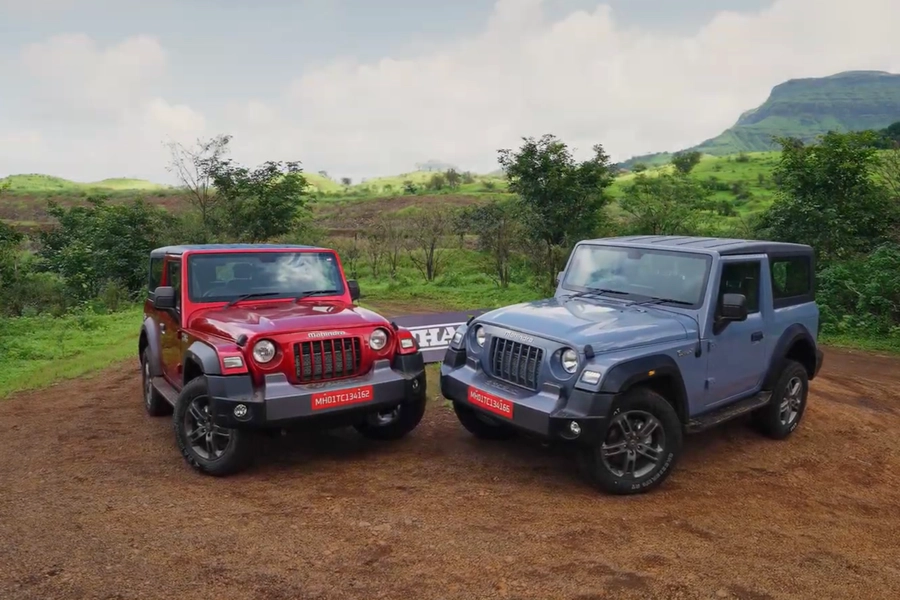
But before the touchscreens, traction modes, and urban polish, the Thar’s story was much simpler born from an unbreakable lineage of utilitarian Jeeps that helped build post-independence India. Today, we look back at how the quintessential Indian off-roader came to be, tracing its journey from the humble CJ2A to the legend we know as the Thar.
Mahindra CJ 2A (1949) and CJ3A (1950 – 1953)
The Mahindra CJ2A was the very first Jeep to be produced by Mahindra under license from Willys-Overland, marking the start of India’s deep-rooted Jeep heritage. Manufactured at Mahindra’s Mazagaon plant in Mumbai, production began in 1949, and these early models proudly carried Willys branding rather than Mahindra’s own.
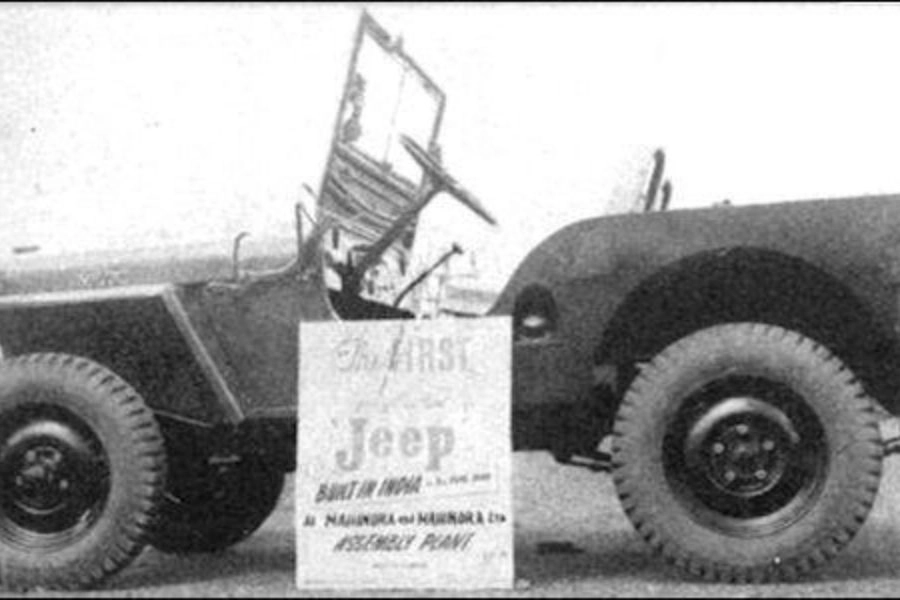
The CJ2A was a civilian adaptation of the World War II military Jeep, offering practical updates such as a tailgate, side-mounted spare tyre, larger headlamps, and an external fuel filler, all while retaining the legendary ruggedness of its military predecessors. The “CJ” in CJ2A stood for “Civilian Jeep”.

Its low bonnet became an iconic design trait, while the interiors were minimal and functional, featuring a five-gauge dashboard, foldable windshield, and hose-down-ready cabin. Power came from a 2,196cc inline-four “Go-Devil” engine paired with a T-90A gearbox and Spicer transfer case, delivering 60 hp and 142 Nm of torque.

Back in the day, the CJ2A was priced around ₹8,000–₹9,000, making it an aspirational yet utilitarian vehicle for early Indian motorists. The CJ3A succeeded it in 1950–51, continuing the evolution of Mahindra’s licensed Willys lineup and setting the stage for decades of iconic off-roaders to come.
Mahindra CJ3B (1953 – 1990)
The Mahindra CJ3B was the upgraded version of the CJ3A and marked a significant leap in performance and engineering for Mahindra’s Jeep lineage. It introduced the legendary “Hurricane Engine,” coded as F4-134 , a Willys-designed 2.2-litre, 4-cylinder petrol motor that featured an advanced F-head design derived from the earlier “Go-Devil” engine.

The engine produced 72 hp at 4000 rpm and 155 Nm of torque at 2000 rpm, giving the CJ3B more power and refinement than its predecessors. The taller engine led to a redesigned, higher bonnet line, one of the CJ3B’s most recognizable traits. It also featured an 80-inch wheelbase, ventilating windshield option, and two wooden bonnet rests for folding the windshield forward. Mechanically, it came with a three-speed gearbox, a two-speed transfer case.

Produced by Mahindra & Mahindra in India for nearly half a century in different iterations, the CJ3B became an enduring icon of durability and simplicity. A historic highlight came in 1964, when His Holiness Pope Paul VI used a specially modified CJ3B during his visit to Mumbai for the 38th Eucharistic Congress. This “Popemobile” still stands preserved at Mahindra’s Kandivali plant today. The Mahindra CJ3B served extensively in the Indian Army, renowned for its durability and off-road capability, and even found favor among India’s leadership, being used by PM Indira Gandhi for official duties and public appearances.
Mahindra CJ4 (1967 – 1973) and CJ4A (1973 to late 1990s)
The Mahindra CJ4, produced at the Kandivali plant in Bombay from 1967, represented a major step forward in Mahindra’s Jeep evolution. Unlike Willys, which never produced a CJ4, Mahindra developed this model by extending the CJ3B’s wheelbase from 80 inches to 91 inches, improving space and stability. It was powered by the 2.2 litre F4 134 Hurricane petrol engine, paired with a three-speed transmission and a two-speed transfer case. Interestingly, the CJ4 also marked Mahindra’s first two-wheel drive vehicle, initially available in left hand drive configuration before shifting to right hand drive around 1969 to 1970.

The CJ4 was known for its utilitarian features such as wooden blocks on the bonnet for the swivelling windshield, twin bonnet catchers, top mounted wipers, and a petrol tank placed below the co driver’s seat. Many units were fitted with FRP bodies to make them weather resistant, and they found widespread use among government departments and NGOs. A notable variant, the CJ101, was developed by extending the CJ4’s wheelbase further to accommodate a stretcher, making it ideal as a rural ambulance. These came with FRP or steel bodies built by external coachbuilders and were known for handling the harsh road conditions of the 1970s with ease.
The 1973 global oil crisis gave rise to the CJ4A, a more fuel efficient evolution of the CJ4. Production of the CJ4A continued into the late 1990s, and this period also saw Mahindra exploring diesel engine options through joint ventures and adaptations to counter the rising fuel costs of the era.
Mahindra CJ 500D (1975 – 1989)
The Mahindra CJ500D marked a defining moment in the brand’s history as it became the first Mahindra vehicle to feature a diesel engine. Produced at the Kandivali plant in Bombay from 1975 to 1989, the CJ500D was essentially a diesel-powered version of the CJ4A, created to meet market demands following the steep rise in petrol prices during the 1973 global oil crisis. It was powered by the MD2350 2.3 litre diesel engine that produced around 38 horsepower, paired with a three speed gearbox and a two speed transfer case for the four wheel drive system.
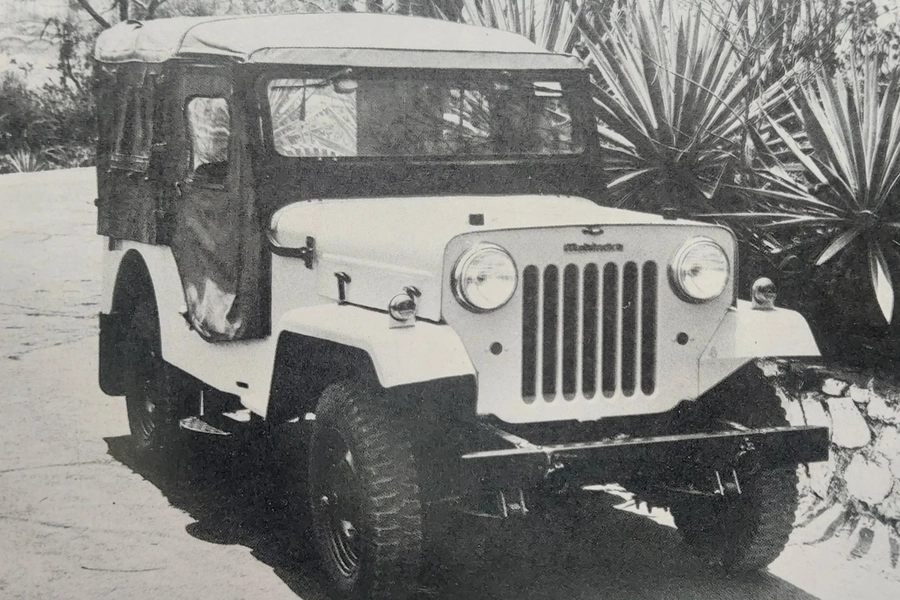
Distinctive visual and functional elements set the CJ500D apart, including four bonnet catchers to control vibration from the diesel engine, openable wing ventilators for airflow to the footwell, flat fenders, and wiper wheel boxes mounted on the cowl panel. A longer version, called the CJ500D 101, was also produced to improve load capacity and versatility. Although the diesel engine’s modest 38 horsepower output was a noticeable drop from the 72 horsepower of the earlier Hurricane petrol engine, the CJ500D’s durability, efficiency, and torque made it a dependable rural workhorse. Its ruggedness and practicality cemented its reputation across farms, government departments, and commercial sectors.
Over time, Mahindra introduced updated versions such as the CJ520D, CJ560D and CJ 500DE, featuring longer wheelbases and upgraded diesel engines to meet emission norms.
Mahindra MM 540 (1985 – 2005)
The Mahindra MM540 DP marked a new era for Mahindra, breaking away from the traditional CJ design after nearly four decades. Produced at the Kandivli plant from 1985 to 2005, it featured a rounded bonnet, profiled fenders, and for the first time, steel doors, elements that would go one to shape Mahindra’s modern SUV design. Powered by a Peugeot XDP 4.90 2.1 litre diesel engine paired with a four speed gearbox. Early models had indicators on the seven-slat grille, later moved to the fenders in 1989 to meet regulations. The MM540DP Metal Body Wagonette (MBW) was a stretched wheel base version of MM540 with an all-steel body with doors.
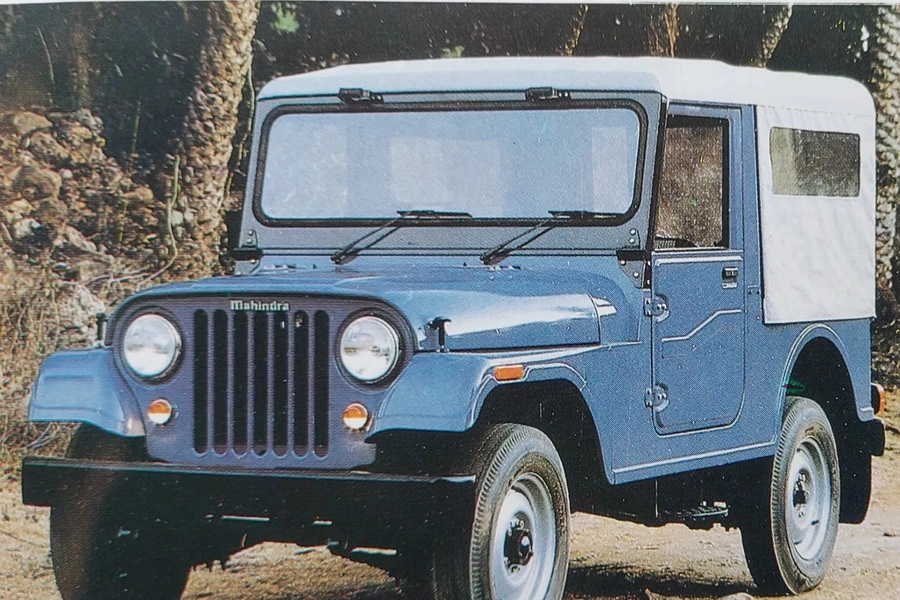
Available in canopy and FRP body options, the MM540 became a mainstay in government departments, police fleets, and the Indian Army. Production ended in 2005 due to Bharat Stage 3 emission norms. A petrol version, the MM440P, used the Hurricane engine, while an export model, the Mahindra 540 “Bahia,” was assembled in Greece between 1988 and the early 1990s using CKD kits from Kandivli. Rugged, reliable, and timeless, the MM540 DP remains one of Mahindra’s most iconic off-roaders.

Mahindra Commander (1991 – 1996 ; 2000 – 2010)
1991 was a tough year for India’s auto industry, and Mahindra was no exception. The Gulf War had sent fuel prices soaring, causing sales to crash. But when the going gets tough, the tough get going. Mahindra’s marketing team spotted an opportunity: a clause in vehicle regulations offered lower excise duty for vehicles seating 10 or more people, and rural India needed a durable workhorse to connect remote villages.
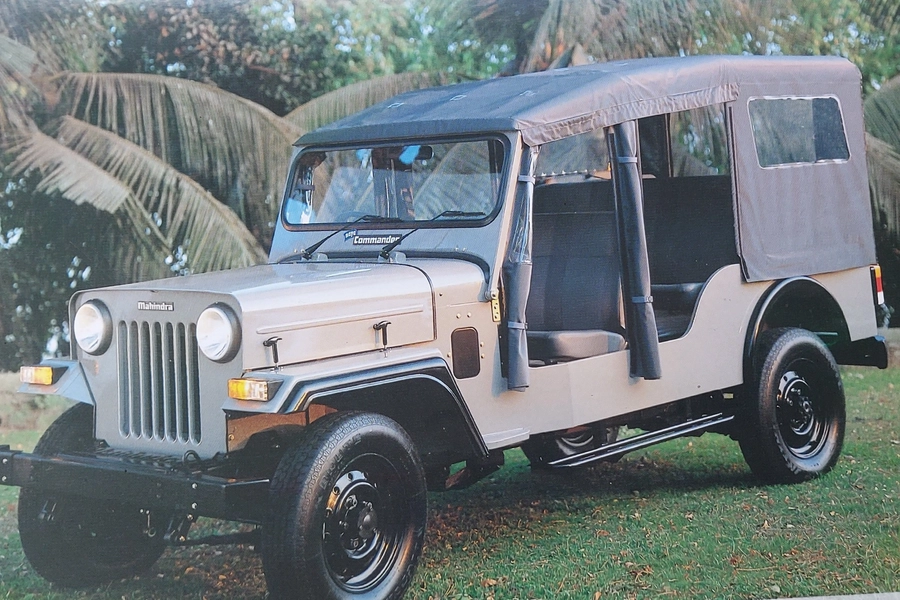
The engineering team quickly assembled one: using the CJ640DP chassis, a new MDI2500 diesel engine, and mechanicals from the robust CJ500, they added an extra row of seats. Out of crisis, the Commander 650 DI was born. Built at Mahindra’s Kandivali plant between 1991 and 1996, it featured a 2.5-litre MDI2500 diesel engine, a 3-speed Warner T90 gearbox.

The Commander 650 DI became an instant success, turning into a lifeline for rural India. It not only bridged villages without public transport but also created employment for youth operating it as local taxis. A later variant, the Commander 655 DI, improved fuel efficiency with a lower rear axle ratio.
Mahindra Armada (1992 – 2001)
The success of the MM540 MBW prompted Mahindra to begin in-house production of metal bodies for better quality control and vertical integration. With tooling support from Fuji and a new body shop at Nashik, the Metal Body Wagonette took shape and was launched as the Armada in 1992.

Styled by Dilip Chhabria, the Armada introduced a bold new look with square headlamps, wrap-around FRP bumpers, body decals, and a ship logo symbolizing its name, meaning “a fleet of ships.” It was also the first Mahindra to feature a full-length FRP dashboard, integrated cluster, air-conditioning, and radial tyres, living up to its tagline, “Heart of a Jeep, Soul of a Car.”
Powered by the Peugeot XDP 4.90 2.1-litre diesel engine mated to a 4-speed KMT90 gearbox and Spicer transfer case, the Armada was an instant hit, with over 14,000 advance bookings. However, production delays allowed competitors to catch up.
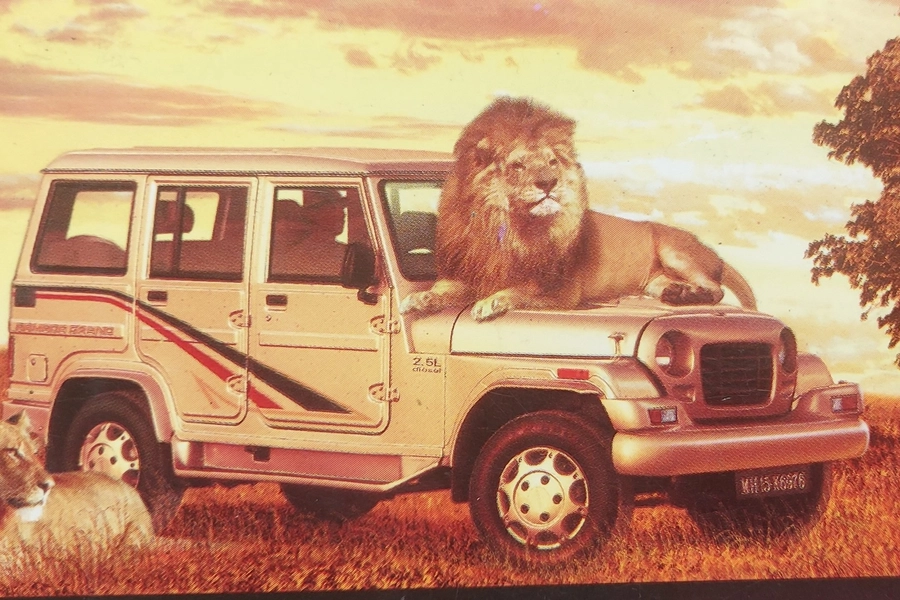
In 1998, the Armada received a major mechanical revamp under Project NGCS (New Generation Chassis & Suspension), executed by Hawtal Whiting UK, which significantly improved its steering and handling dynamics. Later on it also got a luxury variant dubbed the Armada Grand.
Mahindra Classic (1996 – 1998)
Much before the Scorpio “Classic” the existed The Mahindra Classic. The Classic was an upgraded version of the CJ340 DP, designed to appeal to a more premium audience. It featured a bold bull bar, glossy paint, radial tyres, disc brakes, free-wheeling hubs, and bucket seats, all rare touches for its time. Under the hood was the Peugeot XDP 4.90 diesel engine paired with a 4-speed gearbox and Spicer transfer case.

It also sported an aircraft-inspired dashboard with multiple warning lamps, and early models even came with wire wheels before switching to alloys. Exported with a petrol engine in some markets, the Classic marked a turning point, the moment Mahindra realised there was growing demand for lifestyle off-roaders, not just rugged workhorses.
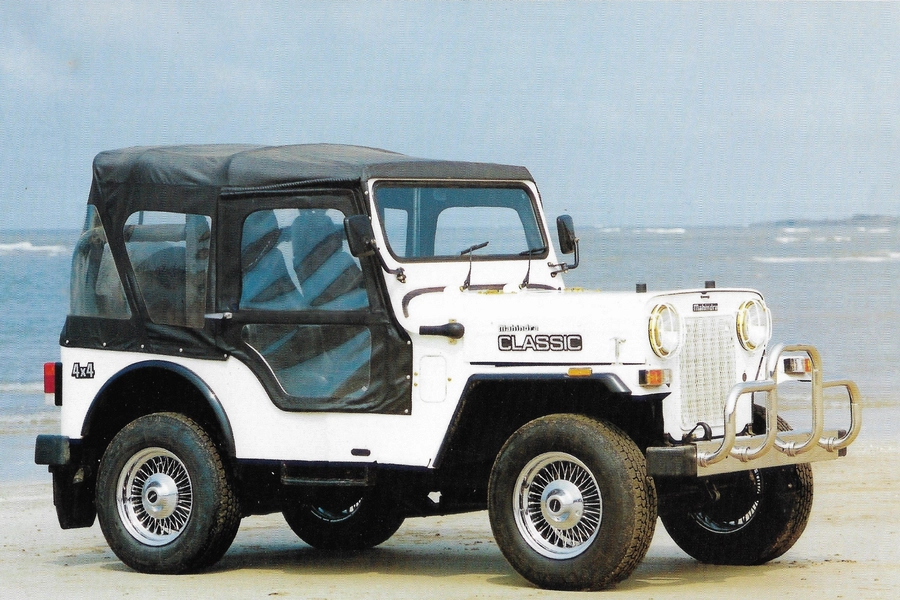
Mahindra Major (2005 – 2010)
The Major was an upgrade to the CL550 MDI, featuring the more powerful MDI3200 diesel engine. Initially sold as the CL550 MDI until 2005, it was later rechristened as the Mahindra Major. Built at the Kandivali plant, it was produced from 2000 to 2010. The early CL550 MDI (2000–2005) came with a 2.5-litre MDI3200 engine, a 4-speed gearbox, and a 2-speed transfer case, while the later Major (2005–2010) received the turbocharged MDI3200 TC engine paired with a 5-speed NGT520 gearbox. Known for its ruggedness and simplicity, the Major was among the last of Mahindra’s classic open-body 4x4s before new motor vehicle regulations brought an end to the production of doorless vehicles.

Mahindra Thar 1st Gen (2010 – 2019)
The Mahindra Thar CRDe was the brainchild of Behram Dhabhar, head of Mahindra’s Special Vehicles Operations, and the man who turned enthusiast dreams into reality. During its development, Mr. Dhabhar started a Team-BHP forum thread asking off-roaders what their ideal 4×4 Jeep should be and built exactly that. The Thar went on to reshape Mahindra’s identity in the 4×4 space.
Launched in 2010 and built at Mahindra’s Nashik plant, the Thar CRDe was a hybrid of Mahindra’s greatest hits: the body from the MM540, engine from the Xylo, front suspension from the Scorpio Getaway, and rear axle from the Bolero Camper. Its name, inspired by the Thar desert, perfectly suited a machine built to conquer the wild.

Powered by a 2.5-litre turbo-diesel CRDe engine, 5-speed gearbox, and 2-speed transfer case, the Thar became India’s definitive off-roader. The Thar also had a DI variant which revived the iconic MM550 by pairing its proven chassis with the rugged DI powertrain. It quickly became a favourite in hill stations and deserts, celebrated for its raw capability and go-anywhere toughness.

A facelift in 2015–16 brought mild updates while preserving its rugged charm. Over a decade-long production run, Mahindra built 20,000+ units, with the final 700 signed by Anand Mahindra himself, a fitting tribute to a legend that redefined Indian off-roading forever.
Mahindra Thar 2nd Gen (2020 – Present) and Thar Roxx (2024 – Present)
The Thar we see today isn’t just a mud-slinging off-roader anymore. When the new-gen Thar arrived in 2020, it changed everything. It brought proper refinement, road manners, and two serious powertrains: the 2.2-litre mHawk diesel from the Scorpio and the 2.0-litre mStallion turbo-petrol that made the Thar faster than anyone expected it to be. Suddenly, the Thar wasn’t just for enthusiasts it was for everyone who wanted a slice of adventure in their driveway.
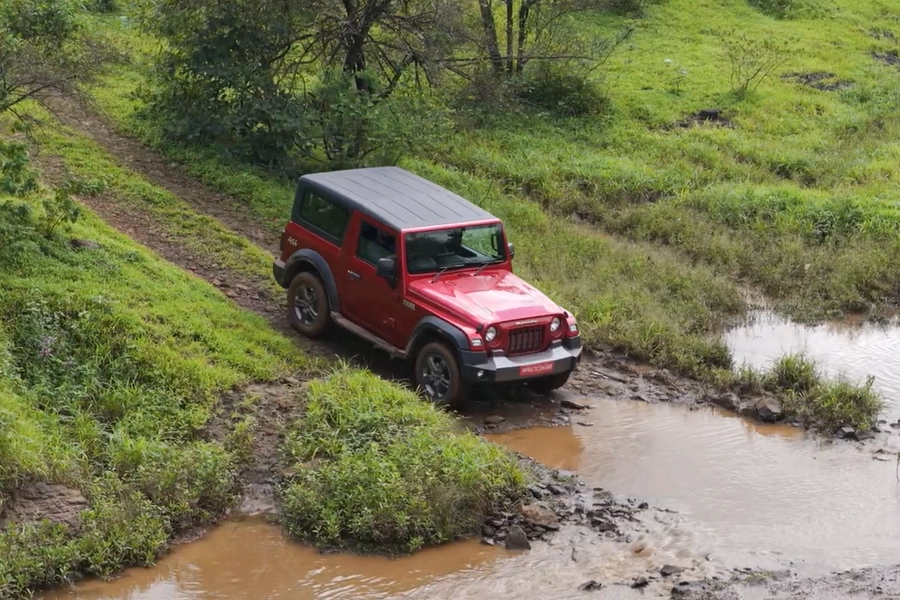
Then came 2024, and Mahindra doubled down with the Thar Roxx, a larger, five-door version that blurred the line between a lifestyle 4×4 and a full-blown family SUV. It got leather upholstery, ADAS, an electronic parking brake, all the stuff we never thought we’d associate with a Thar. But even with all that polish, the heart’s still the same. A ladder-frame chassis, a low-range gearbox, and that unshakable go-anywhere DNA.
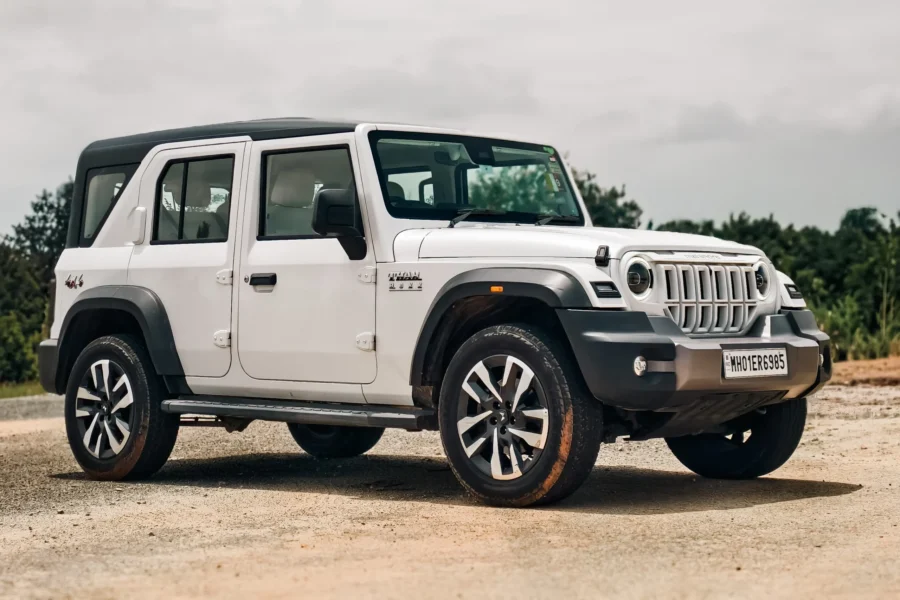
From the first Willys-built CJ2A to the Thar Roxx of today, Mahindra’s off-road story has come a long way. What started as a simple, no-nonsense machine for farmers and soldiers is now parked in city apartments and weekend villas. But even with all the leather seats, big screens, and fancy badging, the Thar hasn’t forgotten where it came from. It’s still rough around the edges in the best way. Because no matter how modern it gets, a Thar will always be a Jeep.
(Archival photo credit: Mr. Samuel Premkumar, Sam’s Mahindra Museum)
